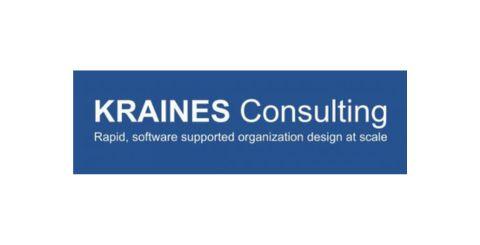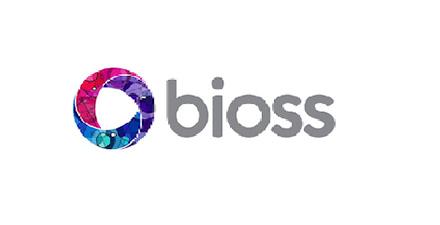Managerial Leadership Practices: Advanced Self-Assessment Quiz
Instructions:
Based on the Requisite Organization principles in Nancy Lee's book, select the answer that most accurately reflects the specified managerial leadership practice.
1. Effective managerial planning, as a core leadership practice in RO, primarily involves:
a) Facilitating team brainstorming sessions to generate the unit's operational plan.
b) The manager determining how the unit's goals will be achieved, including resource allocation and task sequencing.
c) Collaborating with HR to align unit goals with corporate competency frameworks.
d) Adopting strategic plans developed solely by senior executives or planning departments.
2. The "context trio" emphasizes that for effective delegation and alignment, managers must consistently inform subordinates about:
a) Their own performance appraisal results and development goals.
b) The manager's goals/challenges, the manager's manager's goals/challenges, and relevant colleagues' assignments.
c) Detailed financial forecasts and budget variance reports for the unit.
d) The rationale behind every corporate policy and procedure.
3. When assigning a task (QQTR), the manager's primary responsibility regarding the "how" (method) is to:
a) Prescribe the exact steps the subordinate must follow to ensure consistency.
b) Allow the subordinate discretion on method, focusing managerial input on defining the what (QQT) and the boundaries (R, policies).
c) Co-design the methodology with the subordinate to ensure buy-in.
d) Select the method based on the subordinate's preferred work style.
4. In RO, managerial meetings with the subordinate team are essential for context setting, planning updates, and problem-solving. If disagreement arises requiring a decision:
a) The decision should be deferred until full team consensus is reached.
b) The team should vote, with the majority view prevailing.
c) The manager makes the final decision, informed by the team's input.
d) The issue should be escalated to the manager's manager (MoR) for resolution.
5. The primary focus of requisite managerial coaching is to:
a) Prepare the subordinate for promotion to the next stratum. (This is more MoR mentoring).
b) Help the subordinate understand and improve their effectiveness within the scope of their current role.
c) Address and resolve the subordinate's personal or psychological issues. (Requires referral).
d) Evaluate the subordinate's performance against predetermined metrics. (Part of appraisal, not the core of coaching).
6. Personal Effectiveness Appraisal (PEA) differs fundamentally from traditional performance appraisal because PEA focuses on:
a) Ranking subordinates against each other based on output quantity.
b) The manager's judgment of how effectively the subordinate applied their capability to their assigned tasks under prevailing conditions.
c) Achieving specific, quantifiable objectives agreed upon at the start of the year (MBO style).
d) The subordinate's adherence to company policies and procedures.
7. The annual Merit Review process, according to RO, should primarily be:
a) Determined by a central compensation committee based on market surveys.
b) A decision made by the immediate manager, based on their judgment of the subordinate's applied capability (effectiveness) throughout the year, within established policy and pay bands.
c) Directly calculated based on the subordinate achieving specific quantitative targets.
d) Focused on rewarding tenure and loyalty rather than effectiveness.
8. In the requisite selection process, the immediate manager's authority is best described as:
a) Having complete autonomy to hire any external or internal candidate they prefer.
b) Choosing the best fit from a short-list prepared by the MoR, with the authority to veto candidates they judge incapable.
c) Primarily implementing the hiring decision made by the Human Resources department.
d) Selecting candidates based on team interviews and consensus recommendations.
9. Effective induction of a new subordinate is the accountability of the immediate manager and crucially involves:
a) Primarily completing HR paperwork and mandatory compliance training.
b) Assigning an informal "buddy" to help the newcomer socialize within the team.
c) Ensuring the subordinate clearly understands their role, initial tasks, relevant policies, working relationships, and context.
d) Focusing on integrating the subordinate into the existing team's social dynamics.
10. Initiating removal of a subordinate from a role (deselection, not dismissal for cause) is a managerial authority exercised when:
a) The manager has a personal conflict with the subordinate.
b) The subordinate fails to meet a single, specific performance target.
c) After appropriate coaching and warnings, the manager judges the subordinate remains unable to effectively perform the work required by the role.
d) The team members collectively request the subordinate's removal.
11. The requisite approach to Continual Improvement emphasizes that:
a) It should be managed by a separate TQM department or quality circles.
b) It is primarily the responsibility of first-line employees to identify and implement process changes.
c) It is an inherent accountability of every manager to improve the processes and systems within which their subordinates work.
d) Improvement efforts should focus exclusively on cost-cutting initiatives.
12. A manager assigning a "General Responsibility" (vs. a specific task) entails instructing a subordinate to:
a) Complete a one-time project with a fixed deadline.
b) Take predefined actions whenever specific triggering conditions arise, often on an ongoing basis.
c) Assist other team members with their tasks as needed.
d) Develop entirely new procedures for the unit.
13. If a manager realizes their subordinate requires coaching on a specific skill deficiency, the requisite action is to:
a) Wait until the formal annual appraisal to discuss the issue.
b) Address the need proactively and provide timely coaching as part of the ongoing working relationship.
c) Delegate the coaching responsibility to a more experienced team member.
d) Recommend the subordinate find external training resources on their own time.
14. When a manager includes their Manager-once-Removed (MoR) and Subordinates-once-Removed (SoRs) in a "three-level meeting," the primary benefit is:
a) Reducing the number of individual meetings the manager needs to hold.
b) Allowing the MoR to directly appraise the performance of the SoRs.
c) Facilitating broader context setting, enhancing communication across levels, and allowing the MoR visibility for talent pool assessment.
d) Providing a forum for SoRs to voice complaints about their immediate manager.
15. The concept of "managerial leadership" in RO emphasizes that leadership is:
a) Primarily a function of innate charisma and personality traits.
b) A specific set of accountabilities and authorities inherent in the managerial role itself.
c) Developed mainly through external leadership training programs.
d) Interchangeable with the concept of "supervision."
16. A key reason managers must have the authority to decide (not just recommend) merit increases within policy is:
a) It simplifies the payroll process for the finance department.
b) It reinforces the manager's judgment of personal effectiveness and strengthens their authority and relationship with the subordinate.
c) It ensures all subordinates receive roughly equal pay increases.
d) It allows managers to reward subordinates based on personal friendships.
17. If a manager assigns a task but provides insufficient resources (the 'R' in QQTR), the most likely requisite outcome is:
a) The subordinate is expected to procure the needed resources independently.
b) The subordinate should proceed and inevitably fail to meet the QQT requirements.
c) The subordinate should discuss the resource gap with the manager, potentially leading to adjustments in QQT or resource allocation.
d) The task should be automatically cancelled due to lack of resources.
18. Distinguishing coaching from mentoring in RO, coaching (by the immediate manager) focuses on current role effectiveness, while mentoring (by the MoR) focuses on:
a) Remedying critical performance failures in the current role.
b) Providing technical skills training for immediate tasks.
c) Longer-term career development, potential assessment, and opportunities beyond the current role.
d) Setting the subordinate's annual performance objectives.
19. The continual dialogue aspect of Personal Effectiveness Appraisal throughout the year ensures that:
a) Managers can change performance ratings at any time based on mood.
b) The formal annual appraisal discussion summarizes ongoing feedback and contains no major surprises for the subordinate.
c) Subordinates are constantly evaluated against shifting metrics.
d) HR is kept continuously updated on every subordinate's progress.
20. When dealing with dismissal for cause (e.g., theft, safety violation), as opposed to deselection for capability:
a) The immediate manager has the final authority to terminate employment.
b) The process primarily involves coaching the employee to correct the behavior.
c) The situation involves a serious infraction, is typically escalated quickly via the MoR to HR/Legal, and follows specific policy for termination.
d) The employee is usually offered an alternative role within the company.
21. Managerial authority to initiate removal from role (deselection) is balanced by the subordinate's right to:
a) Refuse to leave the role if they disagree with the manager's assessment.
b) Appeal the manager's judgment to the Manager-once-Removed (MoR).
c) Request a transfer to any other open position in the company.
d) Demand a formal arbitration process involving external parties.
22. A manager holding subordinates accountable for continually improving the processes they use is different from holding them accountable for results because:
a) Process improvement is less important than achieving output targets.
b) Subordinates have more direct control over how they work within assigned processes than over final results, which are affected by external factors.
c) Only managers, not subordinates, can identify potential process improvements.
d) Process improvement accountability applies only in manufacturing environments.
23. A manager demonstrating effective context setting avoids which pitfall?
a) Providing too much detail about the tasks of the subordinate's peers.
b) Sharing information about challenges faced by the manager's own manager.
c) Giving either too narrow a context (micromanagement) or too broad/vague a context (leaving subordinates feeling lost).
d) Linking the subordinate's work directly to the unit's overall goals.
24. The RO approach to managerial meetings suggests that:
a) Meetings should primarily be for one-way information dissemination from the manager.
b) Regular meetings are crucial for two-way communication, context updates, and collaborative problem-solving within the managerial team.
c) Meetings should only be held when there is a specific crisis or problem to address.
d) Decisions made in meetings should always reflect the consensus of the group.
25. Ensuring managers consistently apply requisite leadership practices is primarily the accountability of:
a) The individual managers themselves, based on self-assessment.
b) The Human Resources training department.
c) Each manager's own manager (the MoR for the level below), reinforced throughout the hierarchy.
d) An external auditing firm specializing in management practices.
Answer Key with Explanations
-
b) The manager determining how the unit's goals will be achieved, including resource allocation and task sequencing.
Managerial planning in RO centers on the manager's accountability for defining how goals will be met, including resource use and task order. -
b) The manager's goals/challenges, the manager's manager's goals/challenges, and relevant colleagues' assignments.
The "context trio" ensures subordinates understand the broader context for alignment and effective action. -
b) Allow the subordinate discretion on method, focusing managerial input on defining the what (QQT) and the boundaries (R, policies).
Managers set expectations and boundaries, but subordinates should have discretion over methods. -
c) The manager makes the final decision, informed by the team's input.
In RO, the manager is accountable for decisions, though input is considered. -
b) Help the subordinate understand and improve their effectiveness within the scope of their current role.
Coaching is about current role effectiveness, not promotion or personal issues. -
b) The manager's judgment of how effectively the subordinate applied their capability to their assigned tasks under prevailing conditions.
PEA focuses on applied capability and effectiveness, not just outputs or compliance. -
b) A decision made by the immediate manager, based on their judgment of the subordinate's applied capability (effectiveness) throughout the year, within established policy and pay bands.
Merit review is the manager's responsibility, grounded in their ongoing judgment. -
b) Choosing the best fit from a short-list prepared by the MoR, with the authority to veto candidates they judge incapable.
The manager selects from a vetted pool, ensuring fit and capability. -
c) Ensuring the subordinate clearly understands their role, initial tasks, relevant policies, working relationships, and context.
Effective induction is about clarity on role and context, not just paperwork or social integration. -
c) After appropriate coaching and warnings, the manager judges the subordinate remains unable to effectively perform the work required by the role.
Deselection is for capability, after due process and support. -
c) It is an inherent accountability of every manager to improve the processes and systems within which their subordinates work.
Managers are responsible for continual improvement, not just employees or separate departments. -
b) Take predefined actions whenever specific triggering conditions arise, often on an ongoing basis.
General responsibilities are ongoing and condition-based, not one-off projects. -
b) Address the need proactively and provide timely coaching as part of the ongoing working relationship.
Coaching should be timely and continuous, not deferred or delegated. -
c) Facilitating broader context setting, enhancing communication across levels, and allowing the MoR visibility for talent pool assessment.
Three-level meetings enhance context and talent visibility across the hierarchy. -
b) A specific set of accountabilities and authorities inherent in the managerial role itself.
Managerial leadership is defined by role-based accountabilities and authorities. -
b) It reinforces the manager's judgment of personal effectiveness and strengthens their authority and relationship with the subordinate.
Managerial authority over merit increases supports their effectiveness and relationship with subordinates. -
c) The subordinate should discuss the resource gap with the manager, potentially leading to adjustments in QQT or resource allocation.
Resource gaps should be addressed collaboratively, not ignored or worked around. -
c) Longer-term career development, potential assessment, and opportunities beyond the current role.
Mentoring by the MoR focuses on long-term development, not immediate performance. -
b) The formal annual appraisal discussion summarizes ongoing feedback and contains no major surprises for the subordinate.
Continuous dialogue ensures the annual review is a summary, not a surprise. -
c) The situation involves a serious infraction, is typically escalated quickly via the MoR to HR/Legal, and follows specific policy for termination.
Dismissal for cause follows a formal, policy-driven process. -
b) Appeal the manager's judgment to the Manager-once-Removed (MoR).
Subordinates can appeal deselection decisions to the MoR for fairness. -
b) Subordinates have more direct control over how they work within assigned processes than over final results, which are affected by external factors.
Process improvement is within the subordinate's control, unlike all output results. -
c) Giving either too narrow a context (micromanagement) or too broad/vague a context (leaving subordinates feeling lost).
Effective context setting avoids both extremes to support clarity and autonomy. -
b) Regular meetings are crucial for two-way communication, context updates, and collaborative problem-solving within the managerial team.
Meetings in RO are for ongoing communication and problem-solving, not just information delivery. -
c) Each manager's own manager (the MoR for the level below), reinforced throughout the hierarchy.
Consistent leadership practice is enforced by the manager's own manager, not self-assessment or HR alone.




